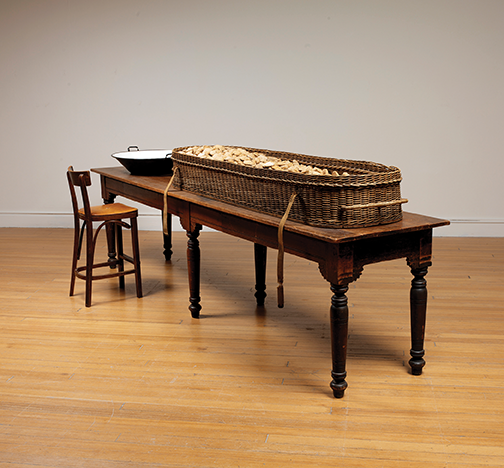The Phantom of Liberty: Contemporary Works in the RISD Museum collection

RISD Museum presents The Phantom of Liberty, a critical examination of freedom tin contemporary life, with over 50 interdisciplinary works from the museum’s collection. The exhibition, which includes works by Deana Lawson, David Levinthal, James Casebere and Nicole Eisenman, is the most expansive display of the museum’s postwar art and design holdings to date.
Phantom took shape shortly after the 2016 U.S. presidential election; the title is a nod to Luis Buñuel’s 1974 film, wherein social mores and basic rationale are run through the surrealist wringer to dizzying effect. RISD Museum’s curator of contemporary art, Dominic Molon, a self-professed pop culture junkie, also adopted Buñuel’s non-linear narrative structure. In the galleries, Molon intercuts works seemingly unrelated in time, media or impetus, suggesting an interdependence of styles, ideas and events.
In a section devoted to communication and language, Cy Twombly’s Untitled, 1968, oil and crayon on canvas, reads like a revolt against formal handwriting. In concert is Ann Hamilton’s performance installation malediction, composed of a table, chair and a wicker casket filled with bread-dough mouth molds (think retainers) cast live in 1991 while she recited Walt Whitman’s I Sing the Body Electric.
Robert Mangold’s abstract canvas Distorted Circle within a Polygon II, 1972, is positioned alongside Michael Owen’s painting Don’t Tread on Me, which depicts a garden hose wound to mimic the serpent on the iconic revolutionary flag of the same title. Both works demarcate space, with Owen’s suggesting a defensive posturing embedded in the fabric of American independence. On an opposite wall, Trevor Paglen’s photograph of an NSA surveillance base in Germany captures an ever-expanding U.S. frontier.
Over 50% of the works in Phantom were acquired during the past four years of Molon’s tenure, a fact he attributes to the museum’s long-term goals: “To grow a collection which reflects the changing temperature of our time;” and to bring more local artists and alumni into the fold. Taking cues from students as to which issues best inform their creative development, the museum has of late sought to stake a greater claim in political discourse, with exhibitions like Phantom flying the flag high.
